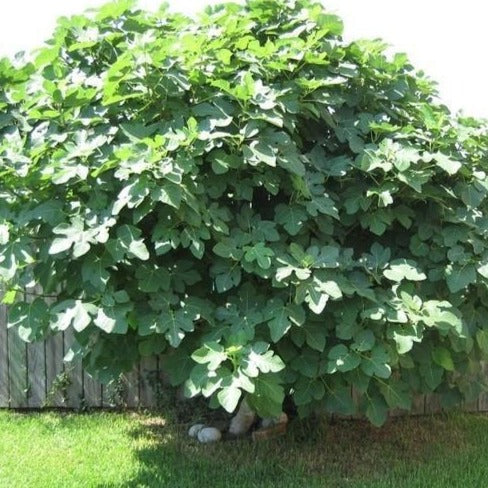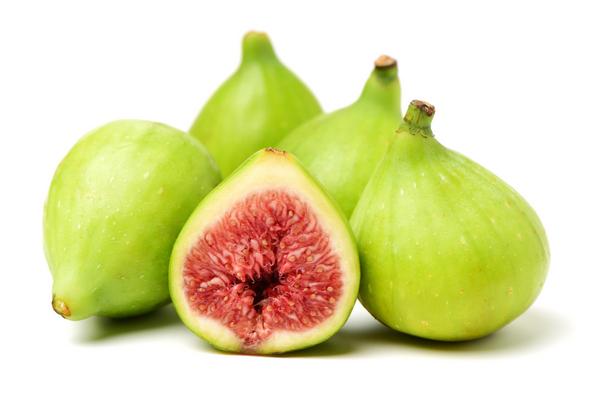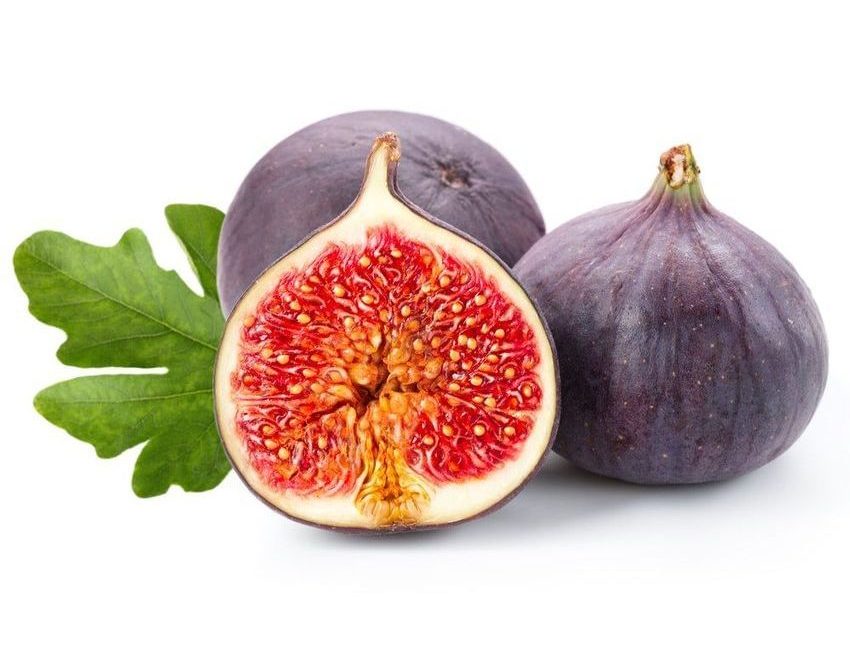Figs

When I was about eight years old our family moved to a home in a new North Texas suburban development. Now at that time new homes didn’t come with sodded yards, shrubs, trees, or fences. Ours came with a blackland dirt yard, lots of Johnsongrass and other obnoxious prairie grasses, in both the front and backyards. It also came with a small bush with large dark green leaves located in one corner of our back yard, just inside the property line from the vacant field behind us. A bush that each spring was full of small pear-shaped yellow-green to reddish brown fruits. A bush that was also home to a huge nest of yellow jacket wasps. A bush that for some unknown reason my father refused to cut down.
I remember asking my father about the bush and was told it was a wild fig and that those bulbous fruits growing on it every year were edible, but that he didn’t like figs. So between the wasps and being told the fruit wasn’t tasty, I don’t recall ever trying one in the entire ten years we lived there. A decision I later regretted since figs have become one of my favorite fruits. In fact I like them so much that my wife and I planted a Celeste Fig (looks like the one from my childhood) from which we harvest and enjoy its abundance every year.
 The fig, a member of the Moraceae (mulberry) family, is native to Western Asia and the Mediterranean. Dating back to ancient times the fig was believed to be one of the earliest plants cultivated by the human race. In fact, a number of sub-fossil remnants dating back to 9,000 BC were found in the excavations of a Neolithic village a few miles north of Jericho, predating the domestication of wheat and barley.
The fig, a member of the Moraceae (mulberry) family, is native to Western Asia and the Mediterranean. Dating back to ancient times the fig was believed to be one of the earliest plants cultivated by the human race. In fact, a number of sub-fossil remnants dating back to 9,000 BC were found in the excavations of a Neolithic village a few miles north of Jericho, predating the domestication of wheat and barley.
The mention of figs and the fig tree appear numerous times in both the Old and New Testaments of the Bible. It was fig leaves that Adam and Eve used to cover themselves after Adam partook of the forbidden fruit. In fact there are a number of scholars who believe that fruit to be a fig instead of an apple. Figs also hold symbolic positions not only in Christianity but in many other world religions including Judaism, Hinduism, Islam, and Buddhism.
There are about 800 species of the Ficus family with Ficus cariac, common fig, probably being the most popular and commercial important. Other well known varieties include the banyans and Peepul (sacred) figs.
 The fig plant can be a deciduous tree or shrub that can grow to a height of 25 to 30 feet with a smooth light grey bark and large fragrant green leaves with three to five deep lobes. Its fruit is technically not a fruit but a syconium—a tear-shaped sac measuring one to two inches in length, each filled with more than 1,000 tiny unisexual flowers later becoming small seeded fruits. The syconium skin is green, turning yellowish white to brown or dark purple as they ripen. The milky sap that runs from a freshly picked fruit can be an irritant when it comes in contact with human skin.
The fig plant can be a deciduous tree or shrub that can grow to a height of 25 to 30 feet with a smooth light grey bark and large fragrant green leaves with three to five deep lobes. Its fruit is technically not a fruit but a syconium—a tear-shaped sac measuring one to two inches in length, each filled with more than 1,000 tiny unisexual flowers later becoming small seeded fruits. The syconium skin is green, turning yellowish white to brown or dark purple as they ripen. The milky sap that runs from a freshly picked fruit can be an irritant when it comes in contact with human skin.
Most fig varieties are pollinated by tiny fig wasps that enter the fruit through a narrow passage or ostiole in the middle of the fruit. But some fig species such as the Ficus cariac do not need pollination by the fig wasp. These species are usually grown in colder climates where fig wasps are not present.
 Figs came to America in 1769 when Father Junipero Serra first planted them in the Mission San Diego in California. Their fruit is know as Black Mission figs. Purplish black on the outside, pink inside with a heady flavor, black figs, as with the kadota and the Adriatic figs, do not need wasp cultivation.
Figs came to America in 1769 when Father Junipero Serra first planted them in the Mission San Diego in California. Their fruit is know as Black Mission figs. Purplish black on the outside, pink inside with a heady flavor, black figs, as with the kadota and the Adriatic figs, do not need wasp cultivation.
California became a commercial fig producer in 1900 and remains the leading fig producer in the United States with most of its annual 30 million pound crop being dried. Ripe figs are very perishable and therefore do not ship well.
There are two crops of figs a year. In California the first crop is harvested from June to early July and because of the short season is less bountiful than the second crop which is harvested from mid-August through October.
Black Mission figs are, of course, one of the most popular varieties and are widely grown all over. In fact Black Mission figs are what is used in Fig Newton cookies. Other popular varieties include Brown Turkey, Calimyrna (also known as Smyrna), Kota, and White Adriatic.
 While California and Texas are the largest growers of figs in the United States, they’re responsible for only about 2% of the 1.27 million tons of world production. That top honor goes to Turkey with 320,000 tons grown annually. In fact, Turkey, Egypt, Morocco, and Algeria account for about 62% of the world’s total.
While California and Texas are the largest growers of figs in the United States, they’re responsible for only about 2% of the 1.27 million tons of world production. That top honor goes to Turkey with 320,000 tons grown annually. In fact, Turkey, Egypt, Morocco, and Algeria account for about 62% of the world’s total.
Figs are delicious whether fresh or dried. They’re great for making jam and using in a large variety of savory dishes as well as numerous baked goods.
The average fig contains only 74 calories and 1% fat. They’re also a good source of fiber containing about 14% of the Daily Value making them ideal for reducing blood pressure and controlling cholesterol. Unfortunately with a 64% carbohydrate content diabetics should consume them sparingly.
So there you have it. A brief story about one of my favorite fruits. And with that, I think I’ll go harvest some figs so I can make a tart for dinner tonight. If you’d like to try your hand baking with figs, you’ll find some mouthwatering fig recipes in the recipe section of this blog.
The Fig Newton
 Born more than 130 years ago, Fig Newtons were one of the first mass produced baked products in the United States. Invented in 1891 by Charles Roser a Philadelphia baker who sold his recipe, based on the British fig roll, to Boston’s Kennedy Biscuit Company. Later that same year James Henry Mitchel, an inventor who worked for the KBC revolutionized the way Fig Newtons were made. His machine worked like a funnel within a funnel—one extruded the soft cake like dough, while at the same time another funnel pumped the fig jam filling—producing a continuous length of cookie which was then cut into smaller pieces.
Born more than 130 years ago, Fig Newtons were one of the first mass produced baked products in the United States. Invented in 1891 by Charles Roser a Philadelphia baker who sold his recipe, based on the British fig roll, to Boston’s Kennedy Biscuit Company. Later that same year James Henry Mitchel, an inventor who worked for the KBC revolutionized the way Fig Newtons were made. His machine worked like a funnel within a funnel—one extruded the soft cake like dough, while at the same time another funnel pumped the fig jam filling—producing a continuous length of cookie which was then cut into smaller pieces.
In 1898 a major merger between the New York Biscuit company (owner of eight bakeries including Kennedy Biscuit Company) and the Chicago based American Biscuit Company (owner of 40 midwestern bakeries) to form the National Biscuit Company. In 1941 National Biscuit Company changed its name to Nabisco. Of course all recipes of the two companies, the extrusion machine, and several other of Mitchel’s cookie making inventions were part of every merger.
There are a number of people who believe in the myth that the Fig Newton was named after Sir Issac Newton. But that is only a myth. Kennedy Biscuit Company’s plant manager, James Hazen, had a penchant for naming their products after small towns in and around Boston. Fig Newtons are named after Newton, Massachusetts. By the way, Fig Newtons were known as Fig Cake in its Finest Form from the first year it was produced until the 1980s when it became a “chewy cookie.”
 Up until the 1980s the only Newtons available were the Fig Newton. However in 1986 the company began offering limited versions of the Fig Newton with variations, the first being apple cinnamon and strawberry Newtons. They were followed by raspberry, cherry, blueberry. and mixed berry. In 2012 the company dropped “fig” from its name altogether. Today, what once was America’s third most popular cookie is now known only as Newtons.
Up until the 1980s the only Newtons available were the Fig Newton. However in 1986 the company began offering limited versions of the Fig Newton with variations, the first being apple cinnamon and strawberry Newtons. They were followed by raspberry, cherry, blueberry. and mixed berry. In 2012 the company dropped “fig” from its name altogether. Today, what once was America’s third most popular cookie is now known only as Newtons.



